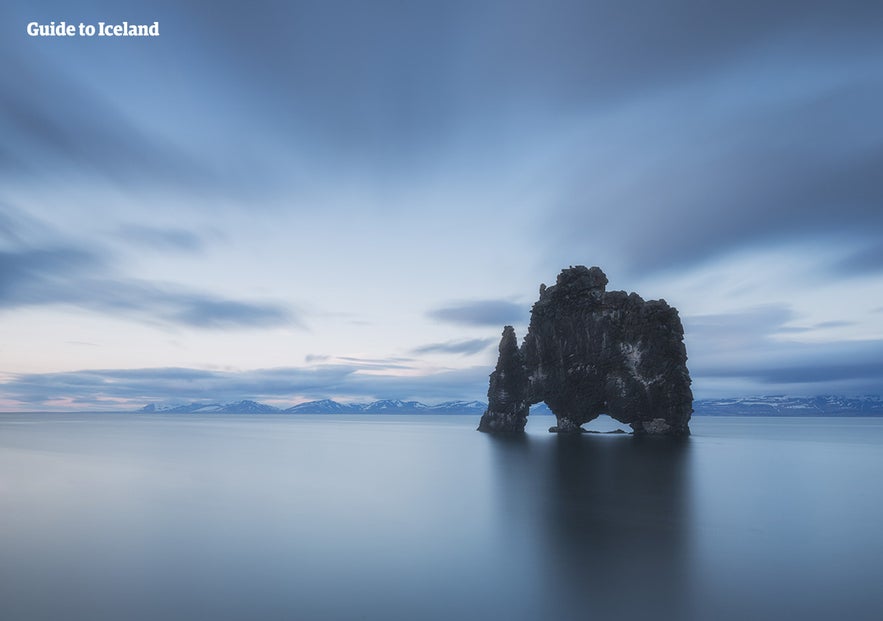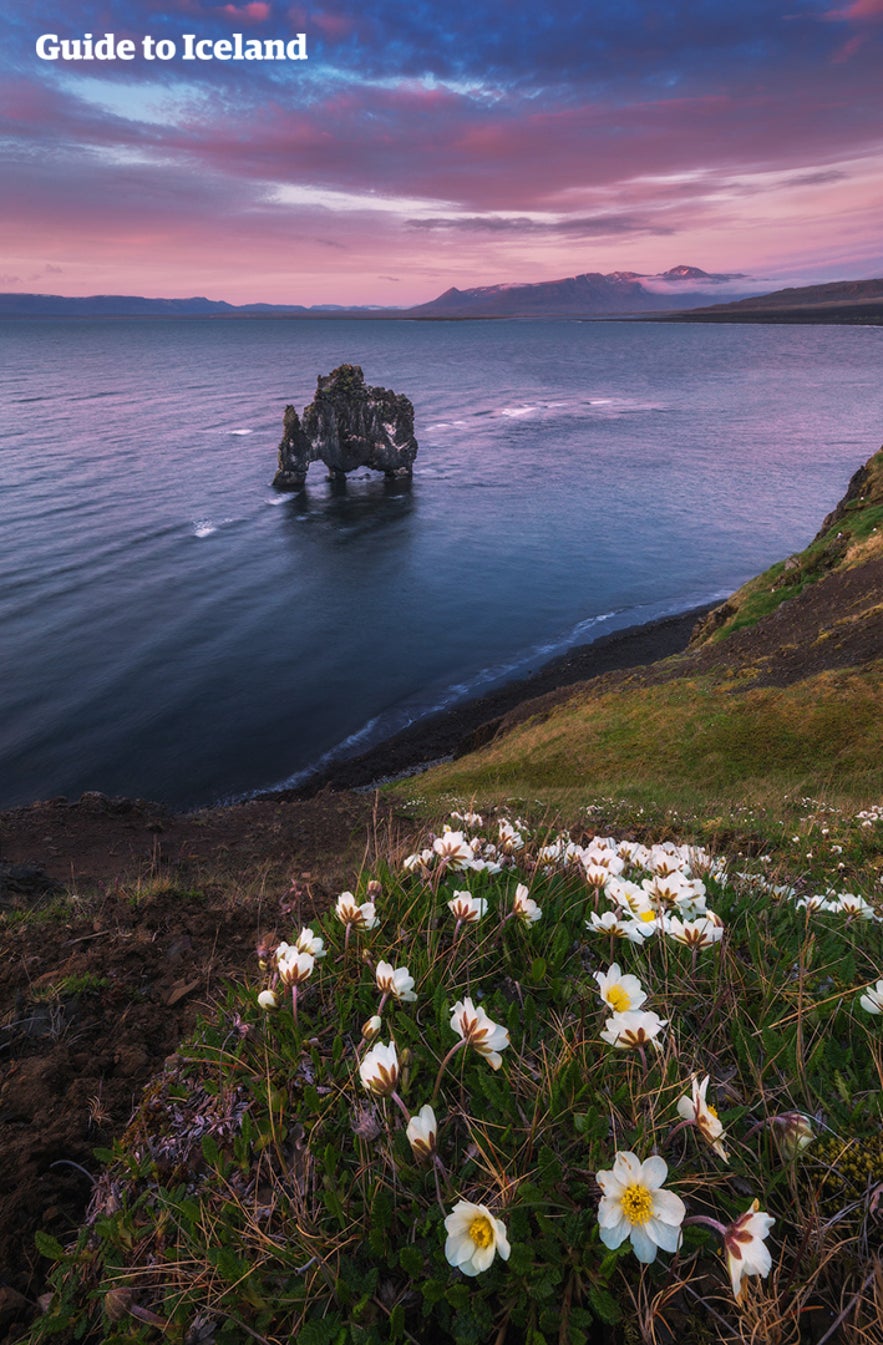
Vatnsnes is a peninsula in North Iceland, best known for its wildlife and geology.
The best way to visit Vatnsnes is on a relaxed self drive tour. One of the best options for doing so is this 7-day Arctic Coast Way self drive, available in the summer months.
Why You Can Trust Our Content
Guide to Iceland is the most trusted travel platform in Iceland, helping millions of visitors each year. All our content is written and reviewed by local experts who are deeply familiar with Iceland. You can count on us for accurate, up-to-date, and trustworthy travel advice.
Wildlife at the Vatnsnes Peninsula.
The Vatnsnes Peninsula is well-known as being one of the best places in the country, alongside the Westfjords, Ytri Tunga Beach and the Jökulsárlón glacier lagoon, to watch seals from the shore.
Iceland is home to grey and harbour seals throughout the year, although occasionally is visited by harp, ringed, hooded and bearded seals. Rogue walruses even show up on rare occasions, but not as far south as Vatnsnes.
The best locations on the Vatnsnes Peninsula to see seal colonies are at the farms Svalbarð and Illugarstaðir. Both of these have car parks and signposts to assist visitors in getting close to the seals, and neither require a great deal of walking to reach the optimal viewing points. At Illugarstaðir, there are also bathroom facilities and binoculars available.
The best time to view the seals is the two hours before and after low tide, when the weather is clear.
The seals of these sanctuaries are not particularly afraid of people, but even so, they are wild animals and should not be approached, and definitely not fed; though usually peaceful, seals have been known to bite, and such wounds are very easily infected.
It is also essential that, in spite of videos on Youtube, the seals should never be filmed with a drone. They are very sensitive to noise, so the buzzing sound (as well as any shouting) will frighten them away, disturbing the animals and ruining the experience for all other guests.
To learn more about the seals on Vatnsnes, visitors should attend the Icelandic Seal Centre, located in the largest town on the peninsula, Hvammstangi.
The centre has been running since 2005, and has exhibitions on the biology and geographical distribution of seals, the protection of seals, and the relationship between the animals and man since settlement. It also has information on the birds and whales that frequent the Vatnsnes Peninsula.
To learn more about seal-watching in Iceland, there is a relevant article you can read on this site.
Geology of the Vatnsnes Peninsula

Vatnsnes is a mountainous peninsula that is geologically less active than the rest of the country. It still has interesting basalt formations, however, the most notable of which is the Hvítserkur monolith.
This bizarre feature stands just out to sea in shallow water, and is most often compared to an elephant drinking; some onlookers have said it more resembles a dragon or a dinosaur.
According to legend, however, it is a troll, that waded into the sea to throw rocks at the nearby monastery (trolls, unlike hidden elves, despised Christianity, and could not live on or near sanctified ground). It is said that the sun rose during its assault and it had no time to find shelter; it was frozen into the rock formation you see today.
Hvítserkur has been reinforced at its base with concrete to preserve it for future generations. It is one of the country’s most photographed landmarks, both for its unusual shape and the fact it hosts many nesting birds in summer, who can lay their eggs safe from land predators such as Arctic Foxes and rats.









